10 melhores ferramentas de IA para designers: Além das funções de design
Como criativo, você precisa aproveitar as ferramentas de IA, pois entende que a inação não é uma opção.
Embora todos os artigos discutam apenas ferramentas de design gráfico de IA para imagens geradas por IA, este artigo tem o objetivo de apresentar a você mais do que ferramentas de IA para imagens.
Você verá ferramentas para acelerar todo o seu processo criativo, desde a ideação e o planejamento até a execução.
Visualização da lista de ferramentas
- Aplicativo automático de folha de ponto e horas faturáveis: Timeular
- Tomada de notas e gerenciamento de tarefas: Notion AI
- Gerador de imagens de IA de primeira linha: MidJourney
- Gerador de texto para imagem amplamente utilizado: Dall-E 2
- Uma ferramenta de gráficos vetoriais de referência: Adobe Firefly
- Ferramenta de marketing abrangente: Adobe Sensei
- Aplicativo do modelo Stable Diffusion: DreamStudio
- Aprimoramento de imagens e vídeos: Topaz Labs
- Geração instantânea de logotipos: Criador de logotipo Looka
- Ferramenta de design simples de arrastar e soltar: Canva
Experimente uma alternativa eficiente e pare de perder tempo - Timeular automatizará suas planilhas de horas e permitirá que você se concentre em seu trabalho criativo.
Quais são as ferramentas de IA para designers?
Além de melhorar enormemente sua produção criativa e sua produtividade, você deve entender que os modelos de IA vieram para ficar e revolucionar a forma como trabalhamos.
Em essência, as ferramentas de design com IA usam inteligência artificial e aprendizado de máquina em todas as facetas do design. Portanto, todas as tarefas rotineiras com as quais os designers gráficos ou web designers lidam podem ser coisa do passado, pois a IA pode simplificá-las e automatizá-las.
Estamos discutindo a remoção do plano de fundo, a geração de espaços reservados ou a criação de banners de sites.
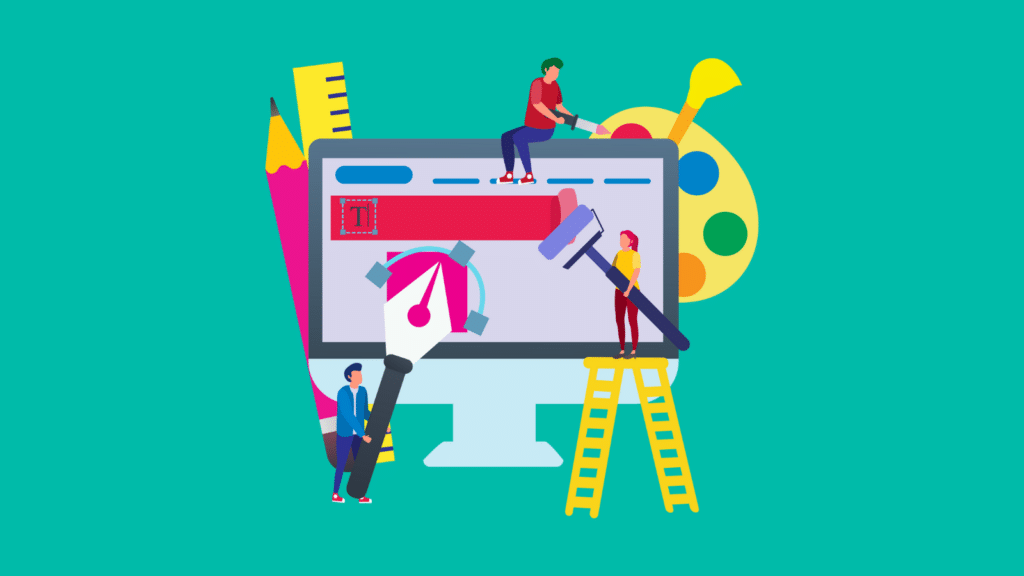
Por que você precisa de ferramentas com tecnologia de IA?
O primeiro motivo óbvio é a necessidade. Quanto mais cedo você adotar a IA em seu fluxo de trabalho, maior será sua vantagem competitiva.
Agências, corporações e designers independentes já os incorporaram em seus processos.
- Por exemplo, em um tópico do Reddit sobre Como a IA mudará o design gráfico, os designers explicam como algumas agências de criação no Reino Unido já a implementaram. Eles mencionam que as agências começaram a criar conceitos rápidos para quadros de humor com ferramentas de IA, que depois são validados com os clientes e desenvolvidos por designers gráficos. Anteriormente, o trabalho conceitual era feito inteiramente por um freelancer ou designer gráfico em tempo integral.
Embora isso possa parecer assustador, a realidade é que as ferramentas de design gráfico com IA estão liberando tempo para que você possa ser mais inovador e criativo além dos limites normais.
- Em um estudo de 2023 realizado pelo BCG com 200 CMOs, a palavra número um que eles expressaram em relação à implementação da IA foi "Otimismo". O mesmo estudo revela que 70% dos entrevistados mencionaram que suas organizações já usam a IA generativa, que afetou suas principais funções de marketing, enquanto 19% ainda a estavam testando.
DICA: Talvez você tenha interesse em explorar o processo de automação do local de trabalho.
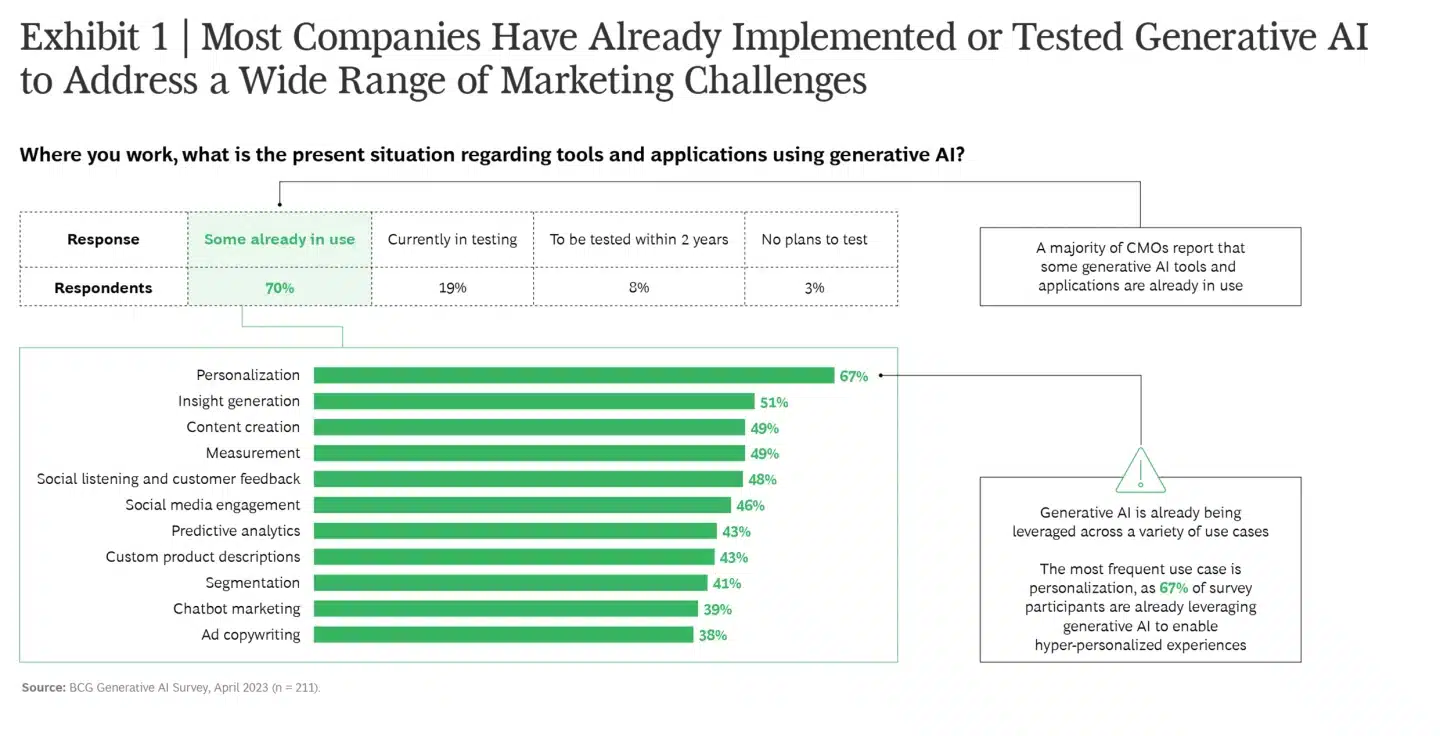
Além da necessidade, as ferramentas de IA permitem um design melhor e mais inovador, estimulam sua criatividade com ideias inovadoras e permitem que você gere paletas de cores personalizadas, aprimore imagens ou melhore designs existentes. Não há nenhuma razão objetiva para não implementar aplicativos de IA em seu fluxo de trabalho, pois eles estão evoluindo e a velocidade não tem precedentes.
As 10 principais ferramentas de IA para designers
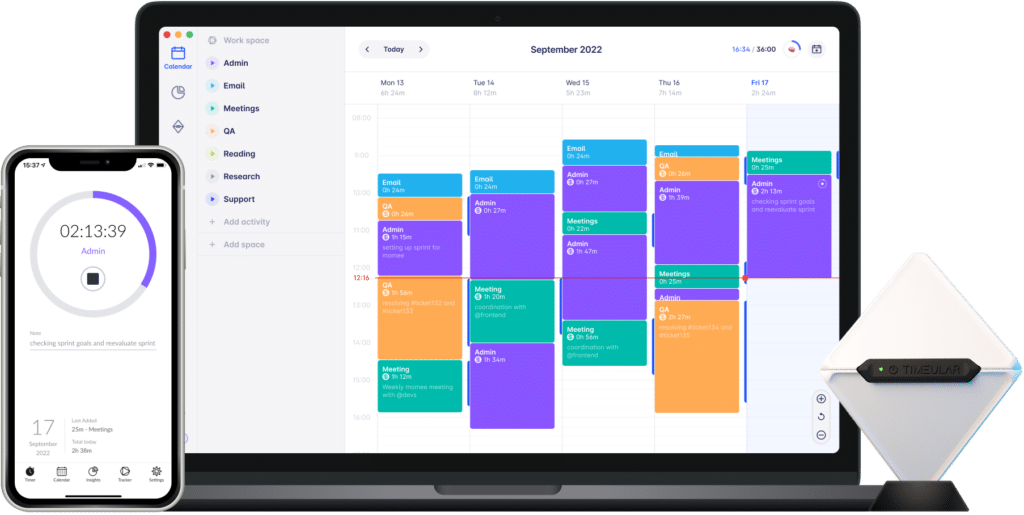
Timeular
Timeular é um rastreador de tempo com IA que entende que os profissionais criativos não gostam de trabalho administrativo. Se os relatórios estiverem em último lugar na sua lista de tarefas, esse aplicativo de controle de tempo gerará automaticamente relatórios precisos e visualmente atraentes. Mas há mais.
A melhor parte do Timeular é que a IA faz todo o trabalho para você , desde a captura de todo o tempo gasto em tarefas, aplicativos, sites e eventos do calendário até a inclusão em sua planilha de horas. Tudo o que você precisa fazer é dedicar um minuto por dia para aceitar os registros de tempo sugeridos pela IA.
Além disso, ele não interfere em sua privacidade, de modo que os gerentes não podem ver em tempo real a planilha de horas de um funcionário, mas com um atraso de 12 horas, e seus dados são armazenados apenas localmente em seu computador.
Um brinde a compensação justa pelo tempo gasto em projetos criativos, gerenciando melhor os custos do projeto, definindo taxas adequadas e obtendo insights sobre seus padrões de trabalho.
DICA: Explore a seção de recursos para ver outros recursos do Timeular, como o gadget físico.
- Confira: Controle de tempo empresarial por Timeular

" O siteTimeular substituiu totalmente as planilhas de horas que a maioria de nós usava. Todas as outras soluções de controle de tempo que tentamos se mostraram difíceis de manusear em comparação com caneta e papel. Após uma semana de Timeular, todos se converteram imediatamente!", Designer Sênior da O'Brien Media
Principais recursos que os usuários adoram:
- Gera relatórios de tempo limpos e fáceis de digerir para serem compartilhados com os clientes e para que você entenda para onde vai o seu tempo;
Alerta você quando estiver perto de atingir um orçamento de tempo com notificações de orçamento para que você não ultrapasse o tempo orçado que atribuiu a um projeto ou tarefa;
Permite o controle de horas com um dispositivo físico de dispositivo de controle de tempo que, quando virado para o outro lado, começa a rastrear outra atividade. Temos que dizer que o rastreador físico é um dos recursos mais apreciados pelos designers.
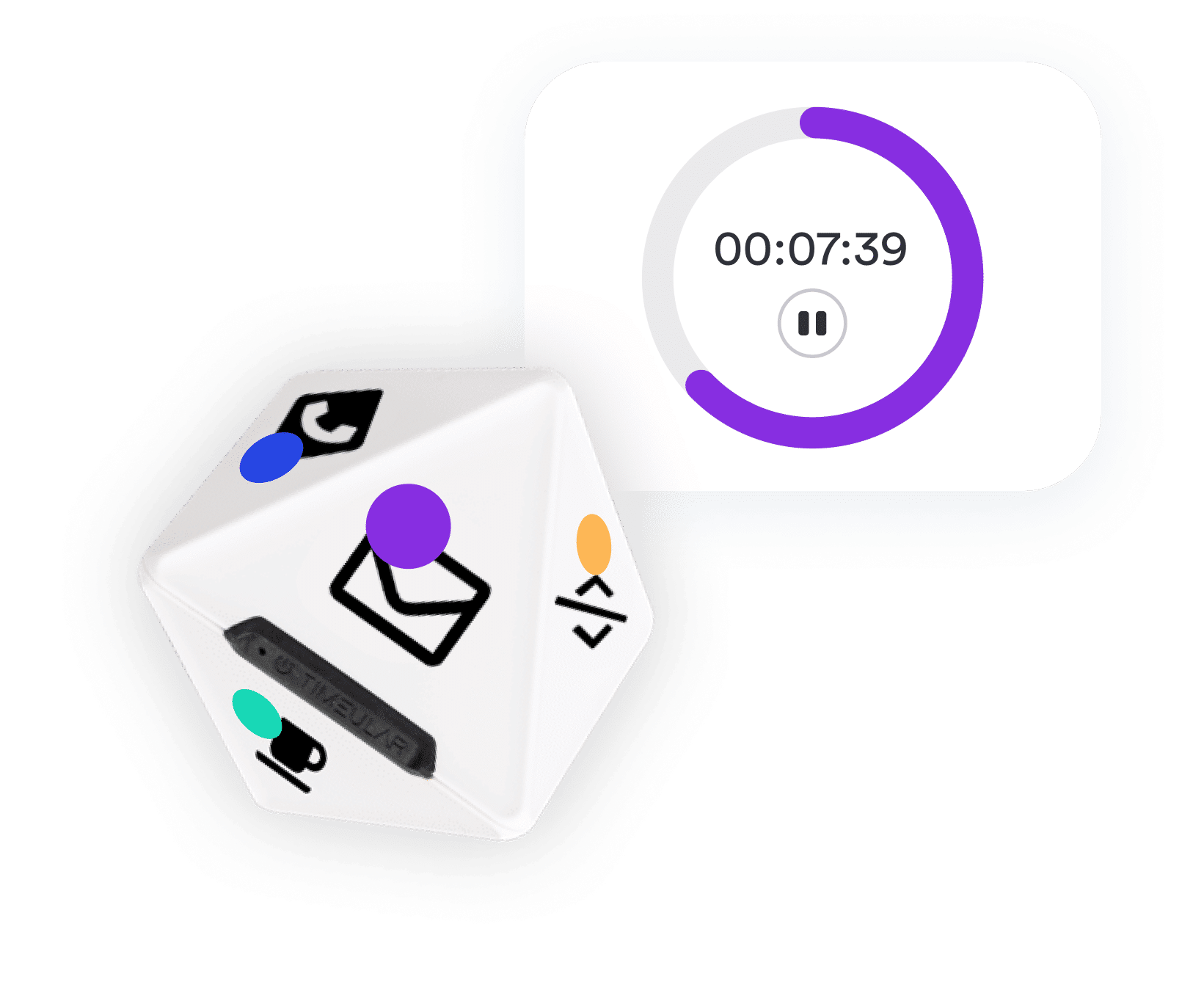
Ele foi projetado para perceber padrões de produtividade pessoal com IA, refletidos em um painel visível apenas para você. Você verá os aplicativos que desviam sua eficiência no trabalho ou os momentos em que você está no auge da produtividade;
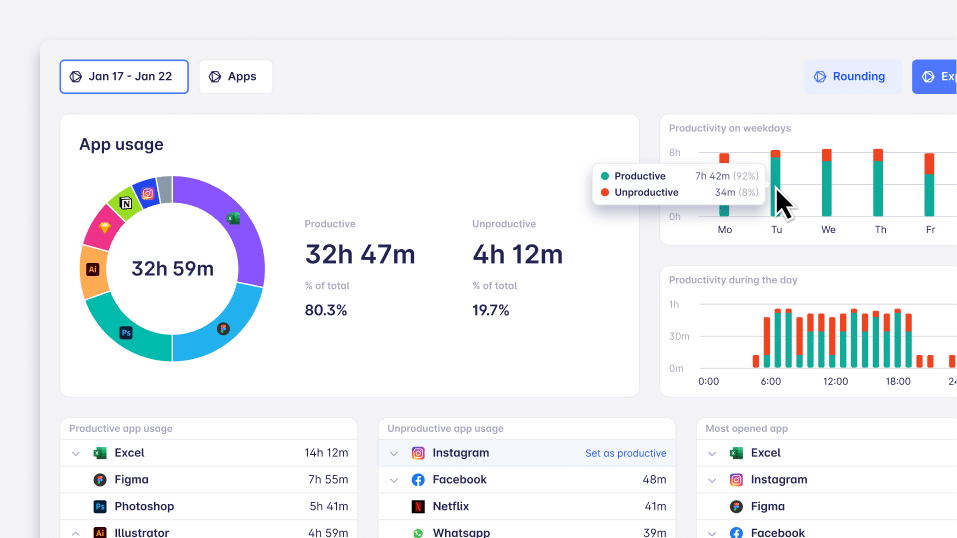
Permite que você controle o tempo da maneira que desejar: com um simples comando CMD+E, diretamente na interface do calendário, automaticamente ou com o rastreador físico;

- Graças ao rastreamento automático de tempo, você pode rastrear o tempo automaticamente nos aplicativos, documentos e sites em que estiver trabalhando em segundo plano e adicioná-lo à sua planilha de horas. Observe que o rastreamento automático funciona se você quiser, e todos os dados rastreados são visíveis apenas para você.
Ele captura e adiciona sugestões de entrada de tempo de IA à sua planilha de horas para obter uma visão geral honesta do tempo gasto nas tarefas. Dessa forma, seu calendário se torna um reflexo preciso do seu dia de trabalho, do faturamento do cliente e dos relatórios.
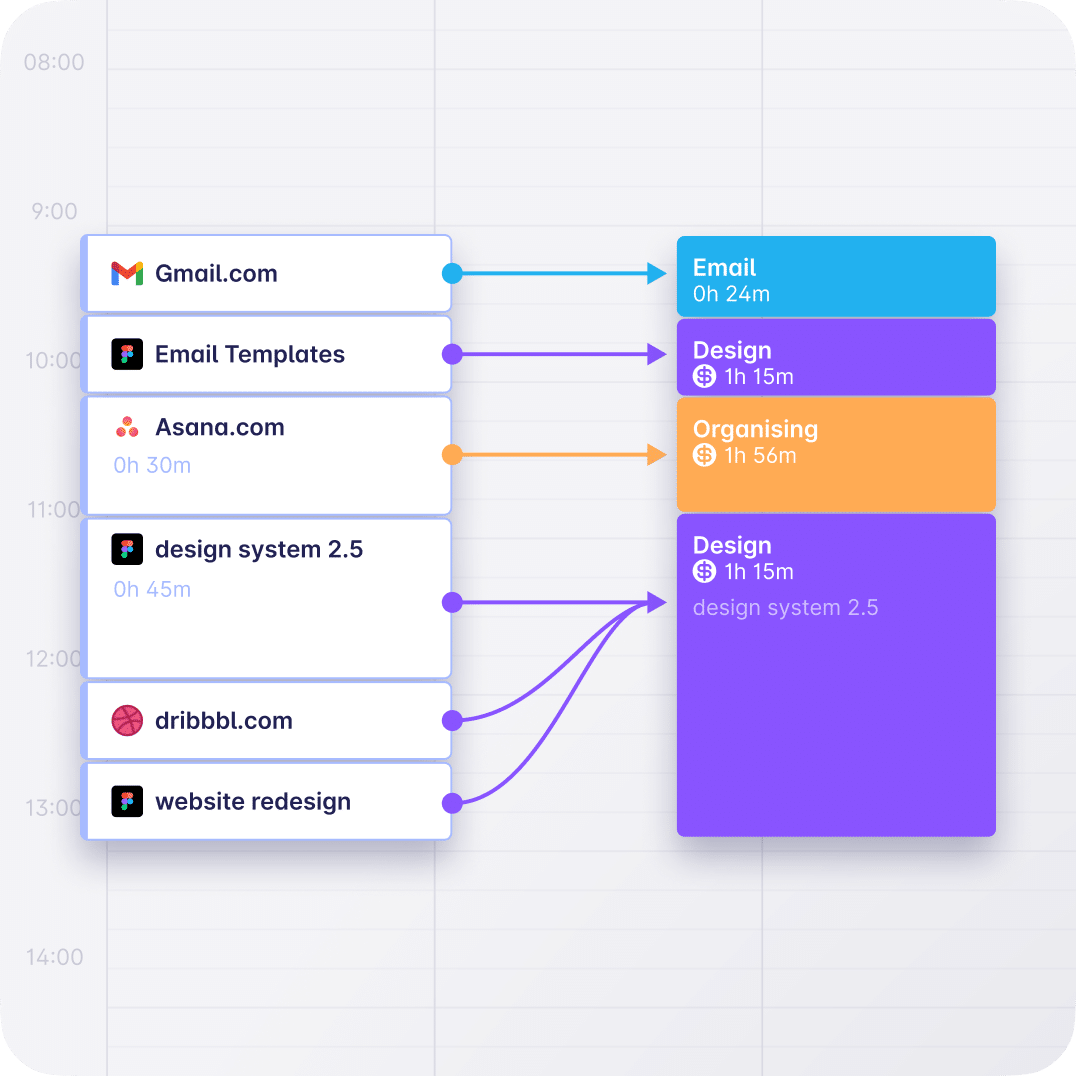
- O rastreamento de horas faturáveis pode ser registrado com um clique, uma vez que você escolhe o rastreamento faturável ou não faturável;
- Permite controle de horas extras e o controle de horas de licença, incluindo PTO, licença médica e licença parental, para uma alocação precisa de recursos sem usar outra ferramenta de gerenciamento de licenças.
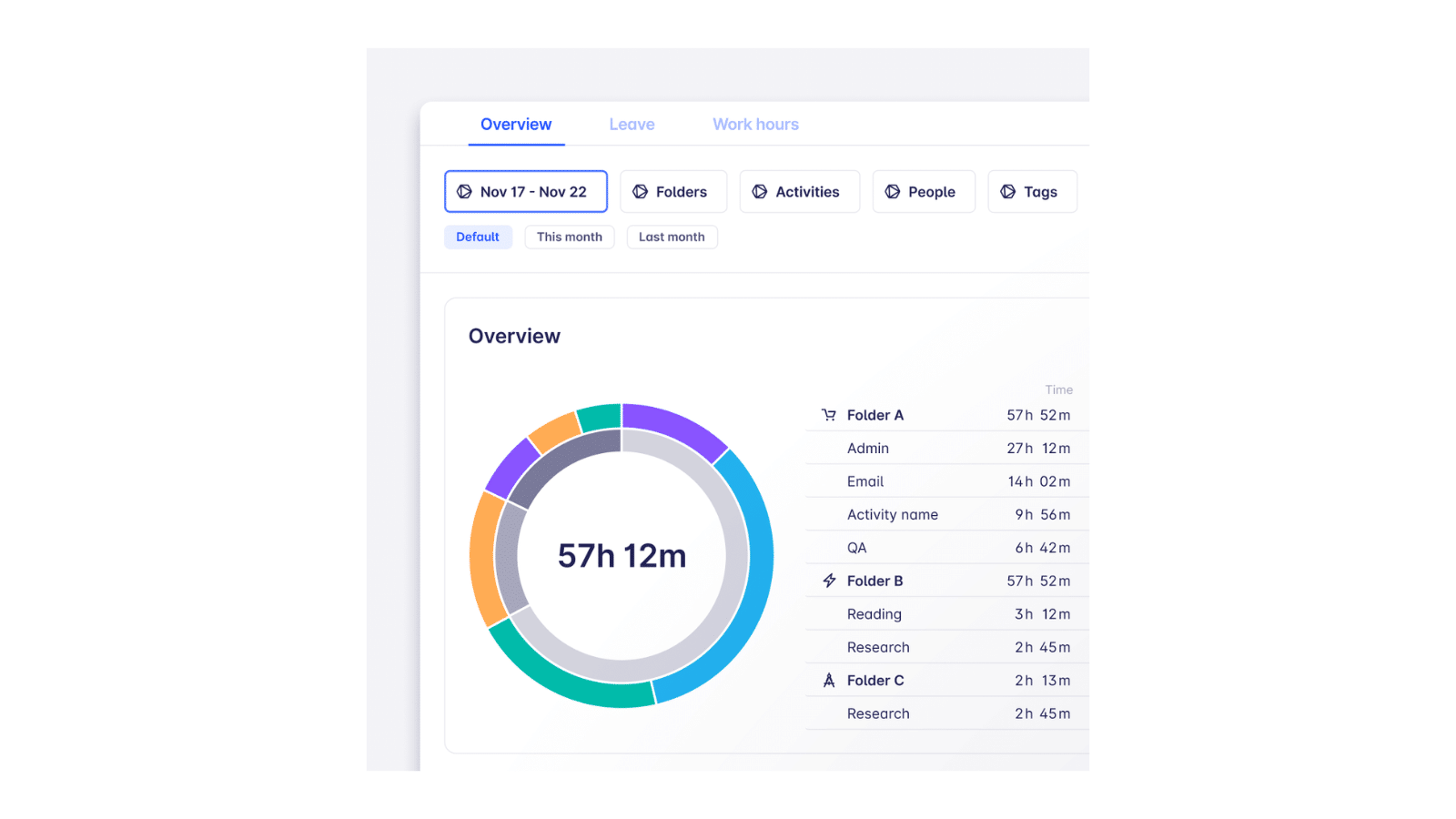
Diga adeus às ferramentas de IA de gerenciamento de tempo e férias desarticuladas. TimeularAs sugestões de registro de horas com IA, o rastreamento automatizado e os insights inteligentes de produtividade da Microsoft estão vinculados no mesmo aplicativo.
Preços:
Plano gratuito de 30 dias (avaliação)
Personal: € 6,30/usuário/mês
Personal Pro: € 9,60/usuário/mês
Team: € 14,60/usuário/mês (usuários ilimitados)
Notion AI
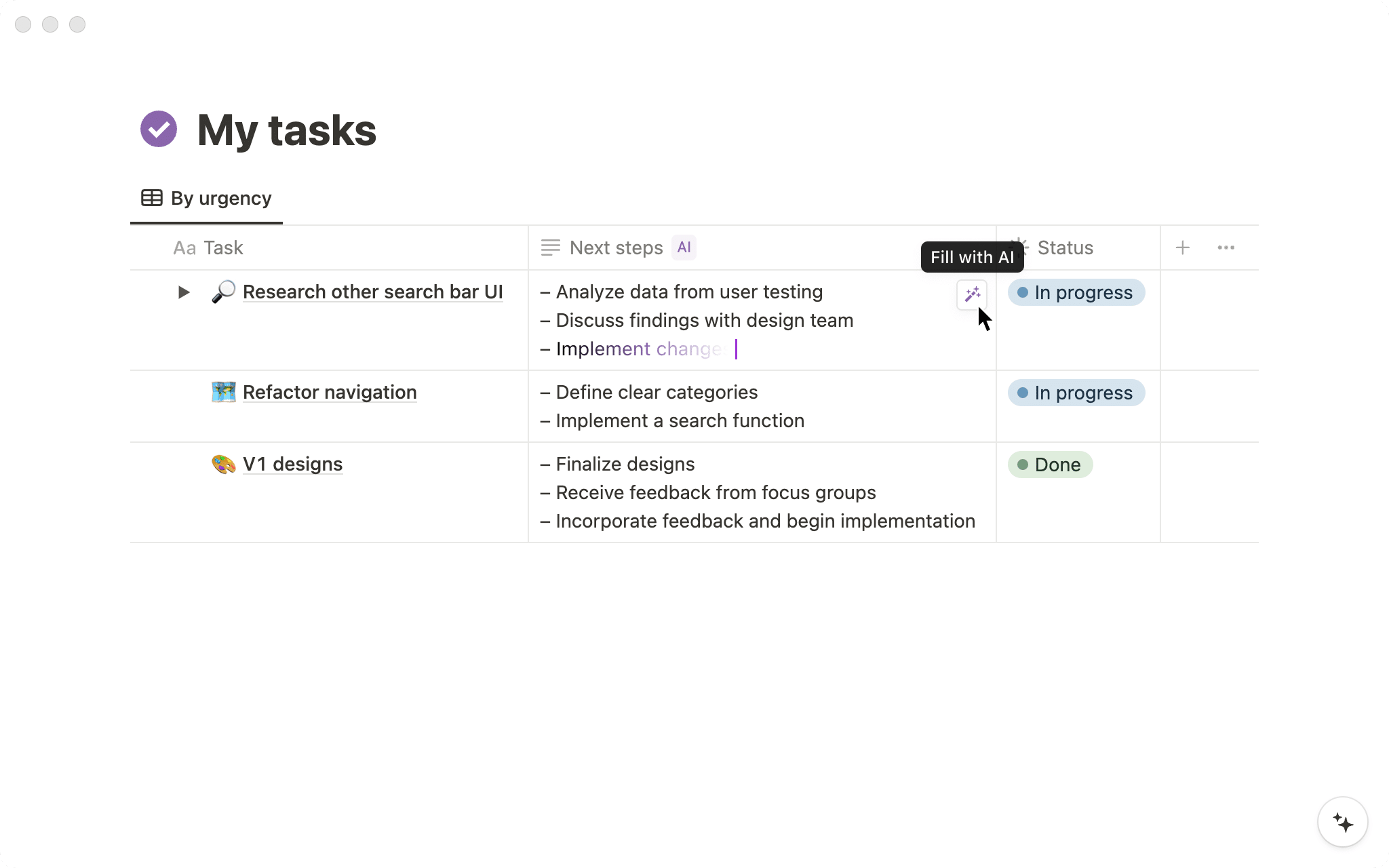
O Notion pode ser seu local de referência para gerenciamento de tarefas, anotações e armazenamento de dados de pesquisa do usuário. Ele permite que você escreva coisas do zero, ajuste-as, compartilhe e faça iterações com os colaboradores.
Ele está muito bem integrado ao seu fluxo de trabalho regular e às ferramentas que você está usando. Um exemplo é a capacidade de visualizar arquivos do Google Drive e designs do Figma em bancos de dados de projetos no Notion.
Principais recursos que os usuários adoram:
Ele dá acesso a inúmeros modelos gratuitos ou pagose até mesmo a um banco de dados do Design System para design e desenvolvimento de produtos;
Você pode visualizar e organizar o banco de dados de várias maneiras, como quadros, galerias ou listas;
- Ajuda você a gerenciar tarefas com recursos que priorizam o trabalho com base na urgência e na importância, enquanto novas tarefas são geradas quando as anteriores são concluídas.
Você pode compartilhar páginas com clientes externos e incorporar conteúdo de várias ferramentas de design gráfico, como Whimsical, Figma, Miro e outras.
o comando AskNotion aponta para pontos de dados específicos para identificarqualquer informação no banco de dados do seu projeto;
Preenche automaticamente resumos de reuniões, acompanhamentos ou atualizações de projetos e até mesmo gera resumos de artigos da Web com seu Web Clipper.
O que os usuários não gostam:
Embora o Notion seja personalizável, esse também é seu ponto fraco, pois essa ampla personalização dificulta sua adoção. Às vezes, você pode se sentir sobrecarregado com todas as opções, especialmente se não gostar muito de organizar documentos e sistematizar dados.
Preços:
Plano gratuito
Plus: US$ 8/mês por usuário
Empresas: US$ 15/mês por usuário
Empresa: Entre em contato para obter preços
Para startups, o Notion oferece 6 meses gratuitos, com todos os recursos incluídos, com base em um aplicativo.
Meio da jornada
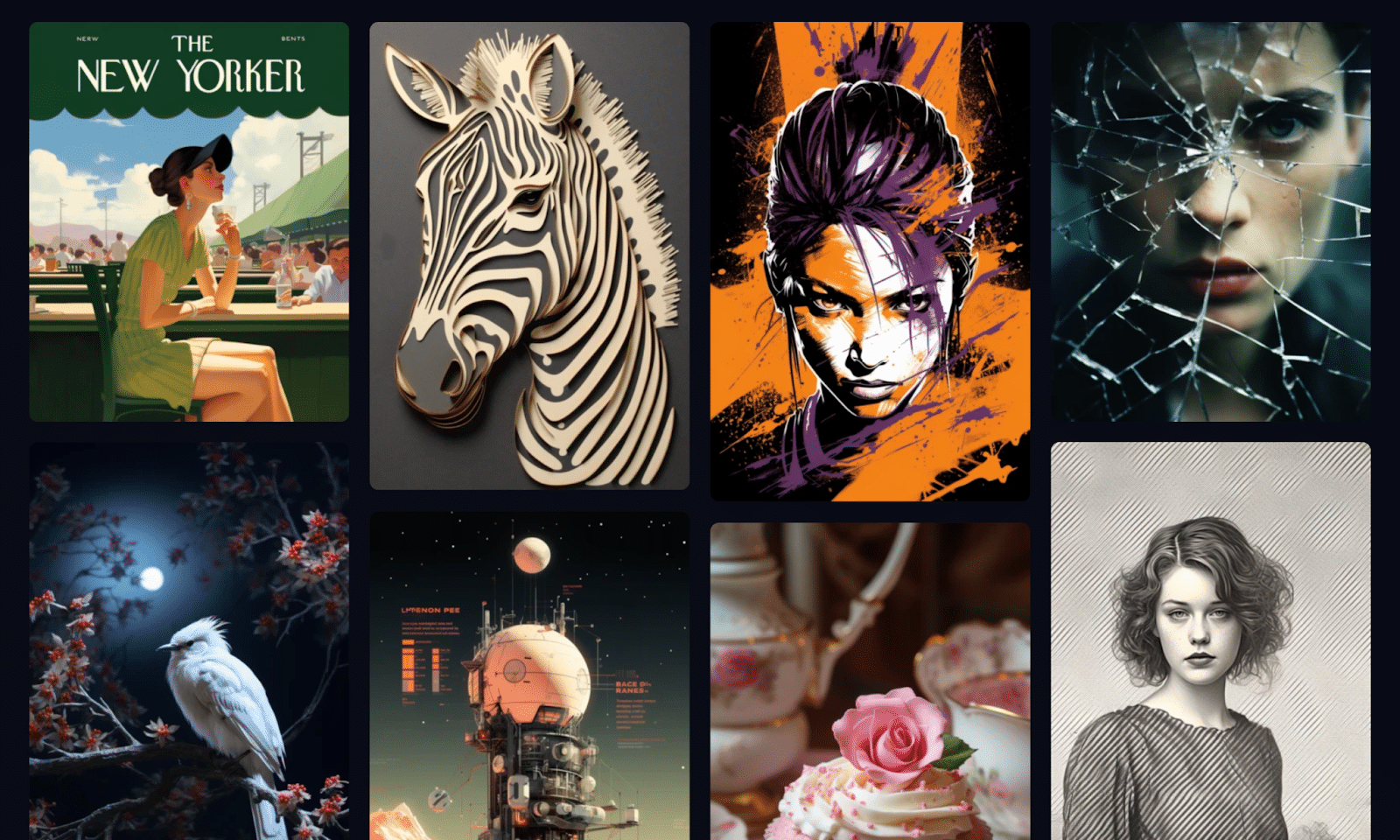
Não é de se admirar que o MidJourney esteja no topo desta lista de ferramentas específicas de design, pois ele ganhou popularidade como o principal gerador de imagens de IA, e estou convencido de que você já o testou.
Essa ferramenta de IA ficou em 4º lugar no estudo do Writerbuddy, com 500,4 milhões de visitantes de setembro de 2022 a agosto de 2023.
Ele permite que você crie visuais incríveis por meio de uma série de prompts, mas também torna a criação de conteúdo complicada. Isso acontece, como seria de se esperar, devido à interface do Discord, que não é a mais amigável do mercado.
O MidJourney é, sem dúvida, uma das ferramentas de aprendizado de máquina que permite aos profissionais de criação transformar a visão criativa em obras de arte que dificilmente se distinguem da realidade.
Principais recursos que os usuários adoram:
É excelente na geração de imagens realistas;
Permite que os assinantes tenham uma conversa privada com a ferramenta de IA, removendo o ambiente coletivo caótico (Discord);
Na versão v6 Alpha, você pode criar prompts descritivos, pois o algoritmo de aprendizado de máquina melhorou muito (incluindo combinações de cores a partir de códigos hexadecimais que você está inserindo);
Com comandos simples , como /imagine e /blend, você pode começar a escrever o prompt e misturar imagens;
Ele gera 4 saídas, que você pode detalhar e utilizar para gerar conceitos. Esses conceitos podem se tornar a base de seu resultado final.
O que os usuários não gostam:
O Discord pode ser muito complicado para novos usuários, portanto, navegar no MidJourney pode levar algum tempo e requer paciência;
Como há milhares de pessoas gerando trabalhos artísticos ao mesmo tempo, o feed parece super agitado, então você precisa ficar atento para encontrar seu resultado;
Requer uma assinatura paga para criar imagens;
Preços:
Plano básico: US$ 8/mês
Plano padrão : US$ 24/mês
Plano Pro: $46/mês
Plano Mega: US$ 96/mês
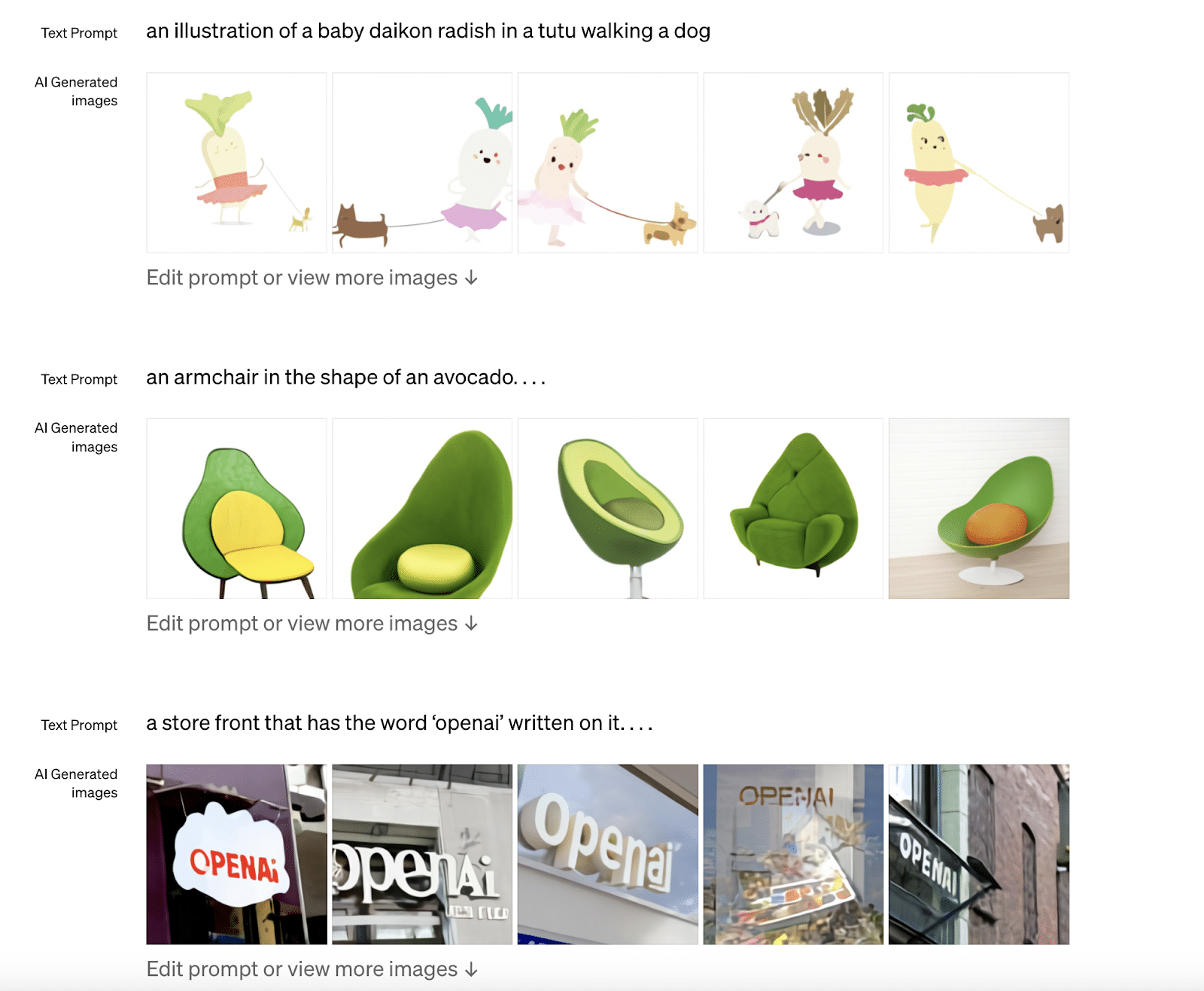
DALL-E 2
Quase todo mundo usou o Dall-E 2 por curiosidade; duvido que os designers gráficos ainda não o tenham experimentado ou mesmo implementado em seu processo de design.
O DALL-E 2 é um gerador de texto para imagem, bem como um gerador de arte de IA, que cria imagens realistas semelhantes ao ChatGPT com base em solicitações de texto.
Basicamente, você inserirá prompts de texto no Dall-E para que ele gere imagens exclusivas e notáveis. Quanto mais complexas, sutis e específicas forem suas instruções, mais qualitativas serão as imagens personalizadas.
O Dall-E 2 pode ajudá-lo a provar aos seus clientes que você está dando um passo a mais para eles e gerar painéis de humor ou fornecer combinações de cores ou layouts.
Principais recursos que os usuários adoram:
Funciona não apenas como um gerador de texto para imagem, mas você pode fazer upload de imagens no Dall-E 2, e ele utilizará as imagens para incorporá-las ao seu resultado;
Gera imagens de alta qualidade que se parecem com arte digital adequada;
Com seu recurso Outpainting, ele permite gerar novos pixels para ampliar os elementos existentes de uma imagem (como ampliar o plano de fundo, criar uma visão panorâmica etc.);
Permite que o inpainting adicione ou remova elementos com base na reiteração ou no refinamento de prompts;
Amplia sua utilidade com seus recursos de integração;
O que os usuários não gostam:
Não há teste gratuito disponível;
Dependência de prompts detalhados, o que implica uma nova qualificação para designers profissionais;
Parece ter uma tendência a obras de arte surreais, pois alguns de seus resultados são mais surreais do que fotorrealistas.
Preços:
Tem vários níveis de preços, dependendo da resolução da imagem (por exemplo, para resolução de 1024×1024, o custo é de US$ 0,020 por imagem)
A ferramenta de IA opera principalmente com um preço "pague conforme o uso", exigindo que os usuários paguem apenas pelos recursos utilizados.
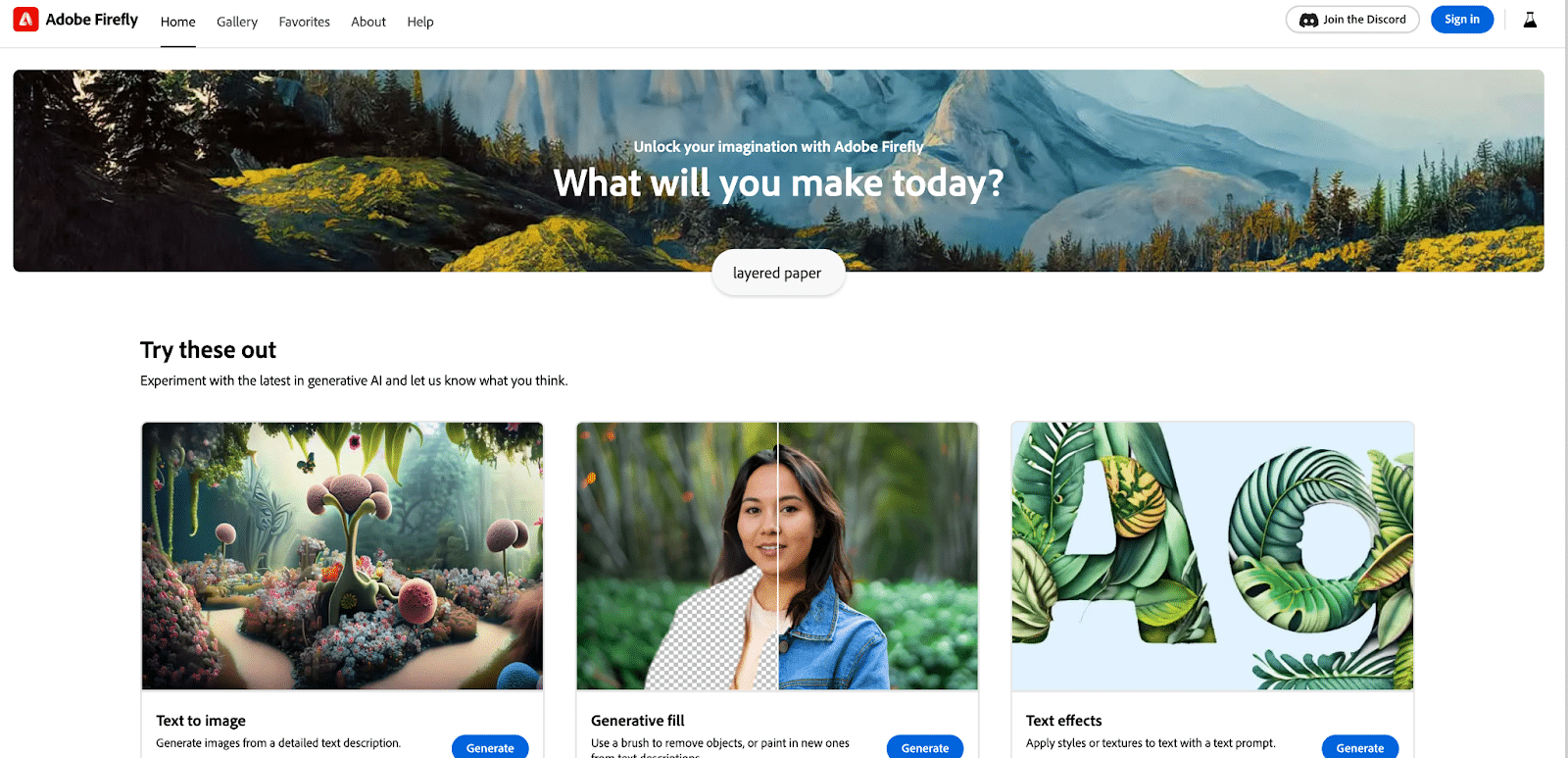
Adobe Firefly
Inúmeras conversas em fóruns como o Reddit colocaram o Adobe Firefly entre as melhores ferramentas de design gráfico até o momento. Ele é um aplicativo de nicho dedicado principalmente a designers gráficos e se tornou a ferramenta de gráficos vetoriais preferida, pois oferece eficiência sem sacrificar a qualidade.
O Adobe Firefly é a mais recente ferramenta inovadora do pacote Adobe, com recursos inigualáveis baseados em IA que tornam a criação de conteúdo visual mais do que viável.
Ele está disponível para assinantes pagantes das plataformas Adobe Creative Cloud, ou seja, Illustrator ou Photoshop. Ele também vem com uma assinatura gratuita, mas com recursos limitados.
Principais recursos que os usuários adoram:
Destaque o que você não quer em uma imagem e substitua facilmente a parte selecionada por conteúdo gerado por IA com o recurso de preenchimento generativo;
Permite a recoloração de vetores, o que resulta em variações exclusivas de ilustrações a partir de descrições textuais;
Ele torna a criação de efeitos de texto extremamente fácil ao digitar um prompt de texto no gerador.
Integra-se ao conjunto de ferramentas da Adobe, facilitando o trabalho em várias plataformas.
O que os usuários não gostam:
A personalização ainda é limitada, mesmo que você possa editar lacunas com o recurso de preenchimento generativo.
Preços:
Gratuito: US$ 0,00/mês para 25 créditos generativos;
Premium: US$ 4,99/mês para 100 créditos;
Aplicativos individuais: US$ 9,99/mês por 500 créditos;
Creative Cloud todos os aplicativos: US$ 59,99/mês por 1.000 créditos.
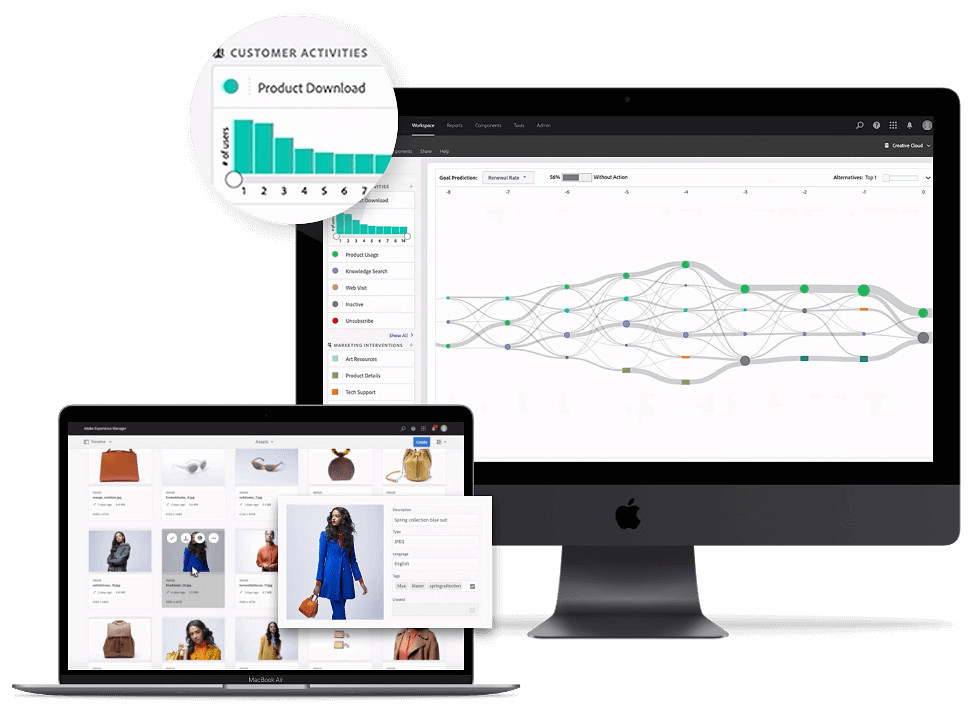
Adobe Sensei
Ao contrário do Firefly, o Adobe Sensei surgiu em 2016, portanto, já está estabelecido entre as ferramentas de design gráfico de IA como versátil.
Com seus algoritmos de aprendizado de máquina, ele extrai dados da biblioteca de fotos de estoque da Adobe e de seus produtos para fornecer insights necessários para várias equipes, não apenas para designers.
O simples comando /Generate lhe dá acesso a imagens que correspondem às suas necessidades no processo de design. Ao mesmo tempo, ele até capta conceitos como emoções em uma imagem com base em elementos como cores e outros detalhes.
Observação: mesmo que faça parte de nossa lista de ferramentas de design gráfico de IA, o Adobe Sensei é um aplicativo abrangente que pode ser usado por profissionais de marketing que não são especializados em design.
Principais recursos que os usuários adoram:
Marca automaticamente as imagens, facilitando a navegação e a localização de determinadas fotos na biblioteca;
Identifica automaticamente os objetos em uma imagem quando você desenha uma forma ao redor deles;
Inclui configurações automáticas, um recurso que propõe ajustes ideais para controles como contraste, realces, sombras ou exposição;
O preenchimento com reconhecimento de conteúdo permite preencher partes selecionadas de uma imagem com conteúdo retirado de outras partes da mesma imagem.
O que os usuários não gostam:
Ele sópode ser usado em conjunto com as ferramentas da Adobe, como o Lightroom ou o Illustrator.
Preços:
Dependendo dos recursos que você está procurando, você encontrará pacotes de preços no site da Adobe Experience Cloud.
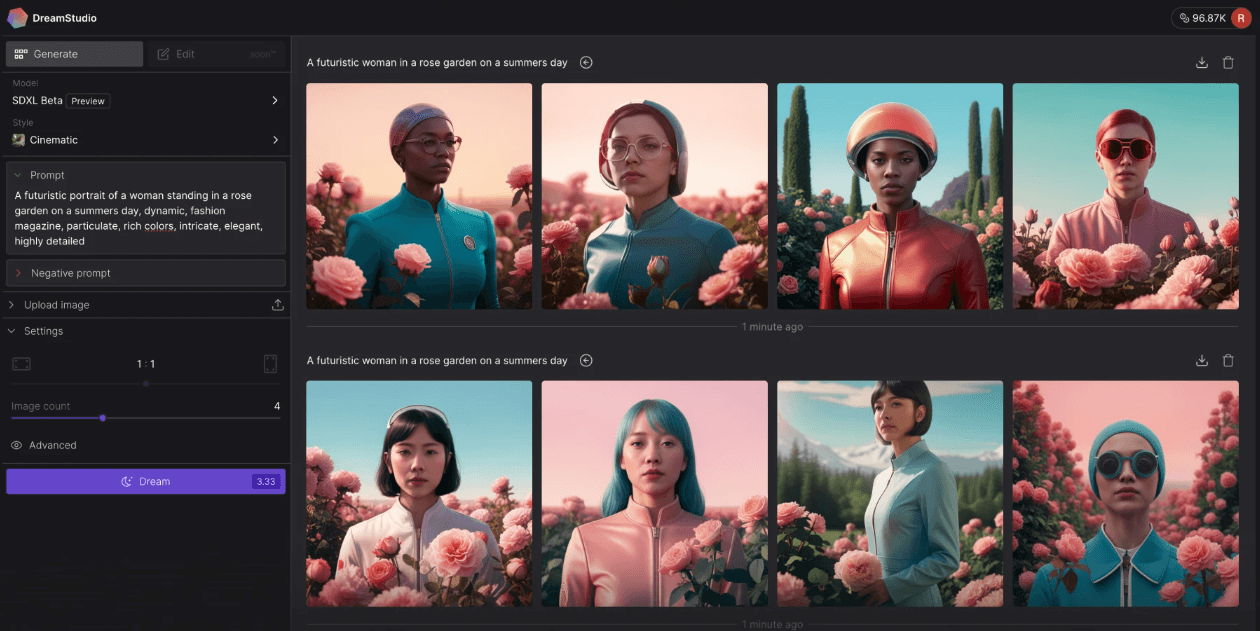
DreamStudio
O DreamStudio é uma ferramenta de design gráfico de IA criada com base no modelo de aprendizado de máquina Stable diffusion. A difusão estável também é um gerador de texto para imagem. Entretanto, com base em seu funcionamento, ela minimiza o esforço necessário no processo de design.
O principal diferencial do DreamStudio em relação aos geradores de arte de IA está na capacidade de edição de imagens. Os designers podem editar componentes visuais, aprimorar imagens e transformar imagens reduzindo a distorção.
Principais recursos que os usuários adoram:
Acesso a predefinições de estilo, desde neutro ou nenhum, até fantasia, cinematográfico, fotográfico ou cômico;
É um dos geradores de texto para imagem que permite praticamente qualquer estilo de saída, desde Art Deco até realismo;
Ele está sob uma licença de código aberto, que permite a qualquer pessoa usar, modificar, distribuir e sublicenciar o software sem restrições;
Ele é bastante rápido, gerando imagens em menos de 2 segundos.
O que os usuários não gostam:
Os usuários do Product Hunt relatam que os prompts criados antes da inscrição foram perdidos;
Ainda tem capacidade limitada para representar conceitos complexos.
Preços:
Gratuito, com US$ 10 para 1.000 créditos (aproximadamente 5.000 imagens)
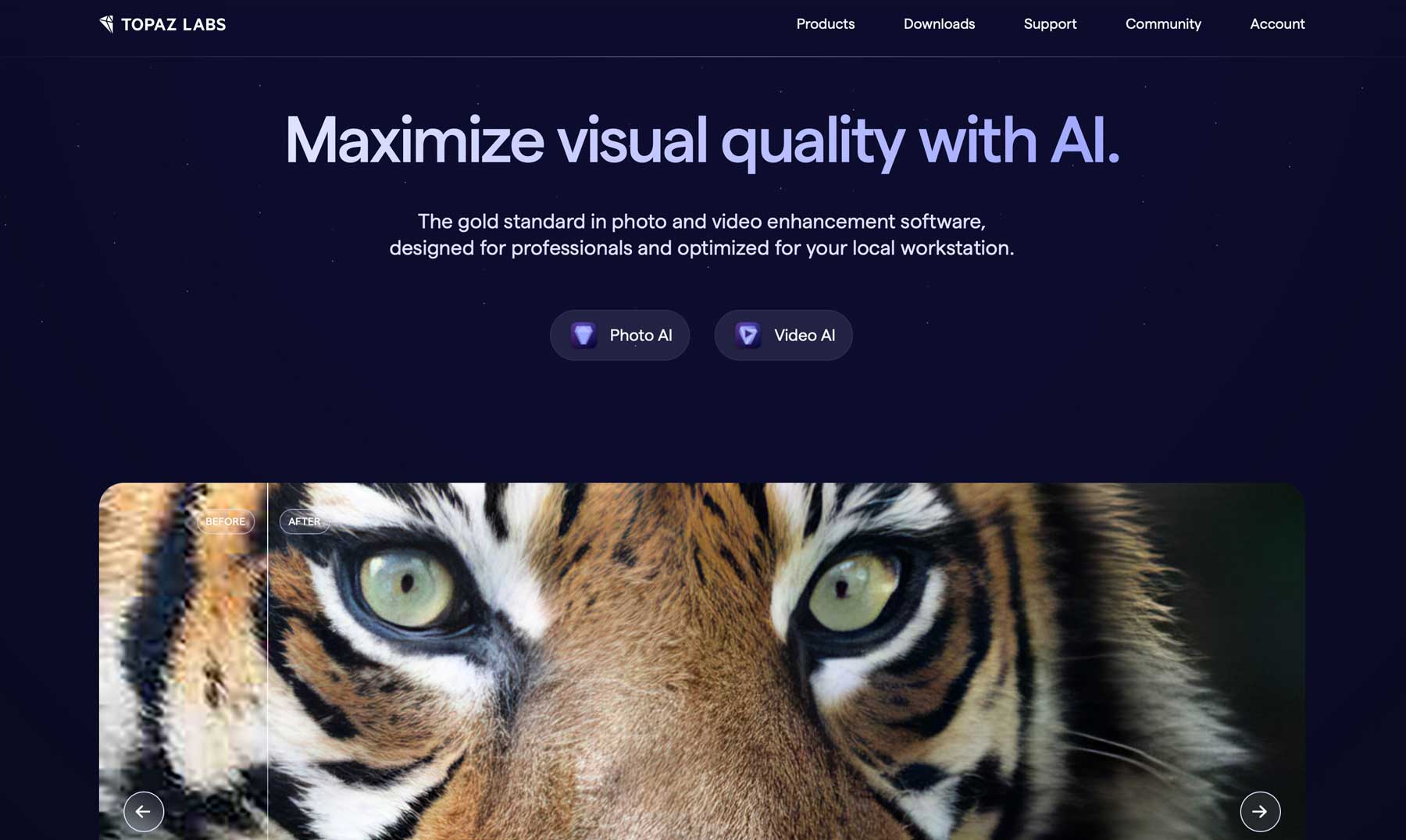
Laboratórios Topázio
O Topaz Labs é considerado uma das melhores ferramentas de aprimoramento de imagem com IA do mercado.
Em essência, o que você deve saber é que a Topaz Labs é uma empresa de software que criou um conjunto de ferramentas de IA para designers. O Topaz Photo AI e o Topaz Video AI fazem parte dos aplicativos, cada um deles especializado no aprimoramento de imagens ou vídeos.
Com o upscaler de imagem Gigapixel AI, você pode aumentar a resolução da imagem, enquanto a funcionalidade de recuperação de rosto adiciona detalhes impressionantes às características faciais.
Principais recursos que os usuários adoram:
Permite resolução de imagem de até 600%;
Detecta e gera automaticamente otimizações de qualidade para imagens e vídeos;
Inclui um recurso Remover ruído que detecta e corrige ruídos de ISO alto ou iluminação fraca, mas cabe a você controlar os pontos fortes e o nível do sistema de IA;
Ao contrário de outras ferramentas de design gráfico de IA, a interface de usuário do Topaz é fácil de entender, pois apresenta tudo o que você precisa ajustar no menu principal;
Ele também inclui um recurso Preserve Text, que permite aos usuários selecionar partes específicas do texto nas quais não desejam incluir edições ou filtros.
O que os usuários não gostam:
Mesmo sendo uma ferramenta abrangente, ela é bastante cara, pois a Topaz Labs permite apenas uma compra única.
Ele limita os recursos à edição de imagens apenas no aplicativo Topaz Labs Image, enquanto a geração e a manipulação de imagens não estão disponíveis.
Preços:
O pacote de IA para fotos: US$ 199 (vitalício)
Pacote de IA de vídeo: US$ 299 (vitalício)
O Gigapixel AI: US$ 99,99 (vitalício)
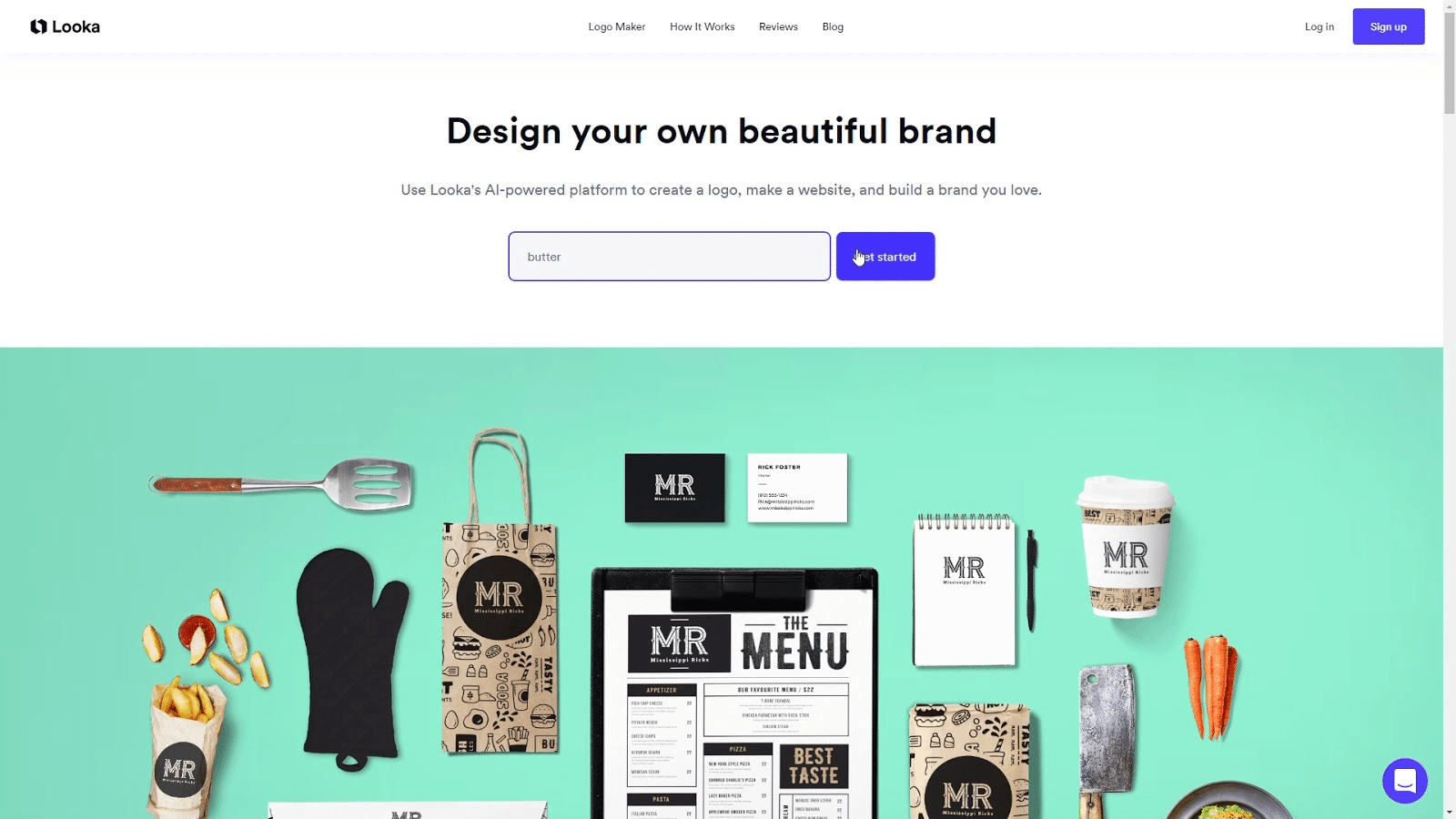
Criador de logotipo Looka
O Looka é um criador de logotipos que gera instantaneamente várias opções de logotipos para uma nova marca para a qual você está trabalhando ou, por que não, para uma reformulação da marca.
Se a ferramenta de IA ainda não gerou um logotipo que lhe agrade, você tem controle total sobre esses ativos criativos , ajustando-os. Altere as imagens geradas com diferentes combinações de cores, altere o layout ou crie ícones que correspondam às suas preferências.
Principais recursos que os usuários adoram:
Depois que seu logotipo é gerado, ele fornece uma bíblia da marca que inclui fontes e cores da marca e um kit de marketing com assinatura de e-mail, cartões de visita e muito mais;
Inclui um assistente de configuração com logotipos pré-fabricados, cores preferidas e slogans para capturar suas preferências de design antes de desenvolver seu logotipo;
Permite downloads de alta resolução em qualquer formato;
O que os usuários não gostam:
Algumas avaliações de usuários mencionam limitações nos ajustes de tamanho e posicionamento;
Sua opção gratuita permite que você crie um logotipo, mas também não o baixe gratuitamente.
Preços:
Pacote básico de logotipo: US$ 20 por compra (um arquivo de 1000×1000 pixels)
O plano do pacote premium custa US$ 96 por ano;
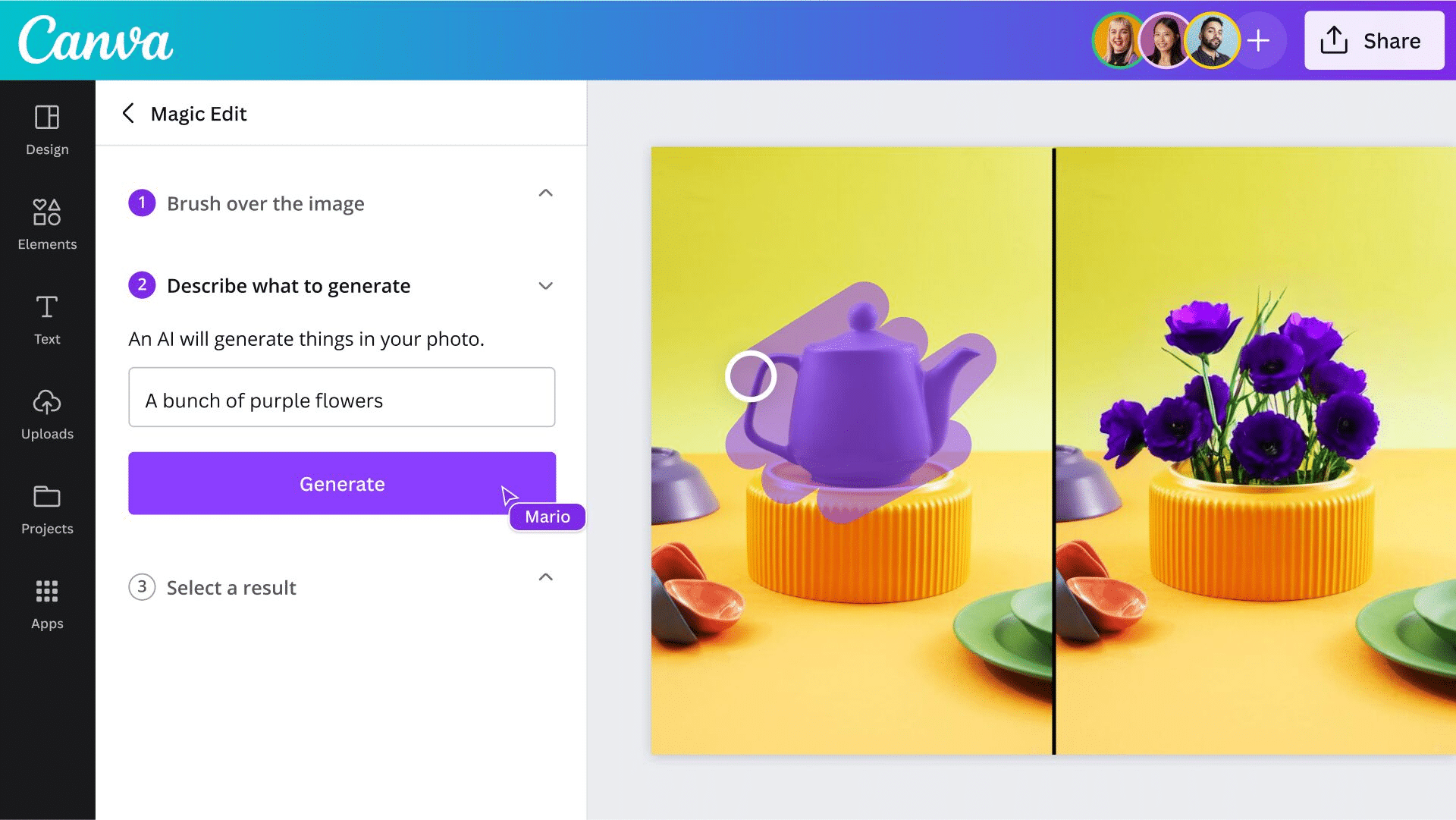
Canva
Embora não seja considerada uma ferramenta para designers em si, já que é amplamente usada por qualquer pessoa, o Canva é uma alternativa boa e mais barata ao pacote da Adobe.
Com sua interface intuitiva e o simples recurso de arrastar e soltar, você pode gerar facilmente ativos de mídia impressa ou digital que têm aquele "je ne sais quoi". Como o Canva implementou recentemente a inteligência artificial, agora você pode criar postagens de mídia social exclusivas e com menos modelos.
Principais recursos que os usuários adoram:
Obtenha modelos de design exclusivos para o seu design sugeridos pelo recurso Magic Design do Canva, alimentado por IA;
Remova facilmente as distrações ou adicione novos elementos às suas fotos com apenas alguns cliques usando o recurso de inteligência artificial, a ferramenta de edição mágica;
Acesse uma biblioteca incontável de modelos, adequada para qualquer necessidade do cliente, desde a criação de logotipos, carrosséis do LinkedIn, anúncios do Facebook e outros;
O que os usuários não gostam:
Ele está disponível principalmente on-line para a maioria de seus recursos e downloads. Observação: O software Canva para desktop não pode ser usado para ajustes de design, alteração de cores ou edição de texto off-line;
Ele pode não oferecer personalização avançada para designers profissionais.
Preços:
Texto para imagem:
Plano gratuito: até 50 consultas
Plano Pro: a partir de US$ 119,99 por ano, por pessoa
PERGUNTAS FREQUENTES
Como as ferramentas de IA afetam o fluxo de trabalho de design tradicional?
As ferramentas de design de IA podem aprimorar enormemente o trabalho de um designer, independentemente de sua especialização. Embora a IA possa automatizar tarefas repetitivas de design, ela não pode substituir os designers; em vez disso, pode mudar o que tradicionalmente era chamado de fluxo de trabalho de design.
Assim como no exemplo acima com as agências, há certas partes de um processo de design que a IA pode assumir. No entanto, os designers estarão livres para adicionar pensamento crítico, inovação e toque humano ao fluxo de trabalho das ferramentas de design.
Há algum risco associado à dependência da IA para o design?
Como todos já estão fascinados com o desenvolvimento da inteligência artificial nos últimos anos, você pode, como muitos outros, confiar demais nas ferramentas de IA para designers.
Isso pode ser arriscado por dois motivos:
- A IA ainda está em sua infância, e há mais desenvolvimento para essa tecnologia evoluir. Assim, você obteria resultados de design previsíveis, o que todos os outros no mercado fazem. É preciso usar seu pensamento crítico e seu olhar treinado para equilibrar a IA e o toque personalizado para garantir que você permaneça competitivo.
- Há também riscos relacionados à privacidade e à ética em torno da IA no design que você deve considerar.
Como os designers podem se adaptar ao uso de ferramentas de design com IA?
Você pode se adaptar e se tornar proficiente em aprender continuamente como aproveitar melhor as ferramentas de IA para designers com frequência e diligência.
Mantenha a mente aberta e aprenda continuamente os recursos de uma nova ferramenta de design gráfico com IA, a qualidade das imagens geradas por IA e como você pode ajustar um prompt para obter um resultado melhor. A difusão estável pode ser uma das novas tecnologias que você também pode aumentar.
Conclusão
Entre centenas de ferramentas, a melhor ferramenta de design gráfico com IA será aquela que melhor atenderá às suas necessidades. Esperamos que seu processo de decisão seja mais fácil agora que lhe apresentamos os detalhes dos aplicativos que podem ser adicionados ao seu processo criativo.
Como venho de uma experiência criativa, o único conselho que eu daria é que você use o como uma ferramenta que o ajude com mais do que apenas o design gráfico. Se você é um designer autônomo ou gerencia uma equipe de design em uma agência, suas necessidades organizacionais são mais complexas para ter sucesso.
Portanto, considere os dois lados, o criativo com ferramentas como Topaz Labs ou MidJourney, mas mergulhe em um melhor gerenciamento de tempo com ferramentas como Timeular e considere o Notion para aprimorar o gerenciamento de tarefas.

Diga adeus às ferramentas de IA de gerenciamento de tempo e férias desarticuladas. TimeularAs sugestões de registro de horas com IA, o rastreamento automatizado e os insights inteligentes de produtividade da Microsoft estão vinculados no mesmo aplicativo.
Talvez você também se interesse por: